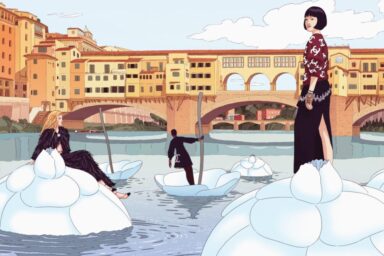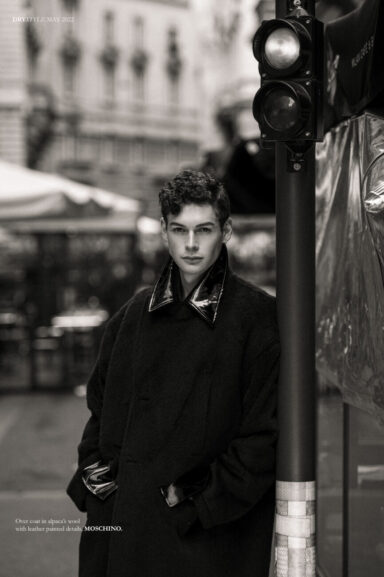FROM FASHION TO ART, MANUEL SCRIMA’S AESTHETIC RULES ARE THE SAME – WITH THIS EXHIBITION HE GOES FURTHER WITH THE SEARCH FOR PURITY EXCLUDING POST PRODUCTION
Text by Fiammetta Cesana
This Milanese fashion week has been the chance, as we witnessed with the infinite lullaby performance of Ragnar Kjartansson at the Church San Carlo al Lazzaretto, to discover contemporary art creations beyond the last ones showcased by the glamour system. And who literally made his debut from fashion’s to art’s stage, leaving the dress to deeply enhance the immaterial essence of the body, is the Italian-Belgian fashion photographer Manuel Scrima.
With the ongoing exhibition ‘Disembody’ at Fabbrica Eos, the young talent, who signs an Guinness world record chapter of fashion history by shooting on the Everest the highest catwalk ever, spread now his wings towards a new creative dimension. His strong attachments to classicism and art studies – born since adolescence as posters of Madonna on the walls of his friends’ rooms were replaced by Matisse’s blue nudes – this time, instead of exploring the beauty of design, praise the one living underneath the clothes. By printing negative and positive images of veiled nude figures on glass and plexiglass plates, and then overlapping those plates to form an intertwining of bodies and chiaroscuro, Scrima’s creative research turns into a process of ‘disembodiment’, aiming to detach the human subjects from their corporeal meaning and make them enter the world of ethereal senses, also thanks to the total exclusion of post-production.
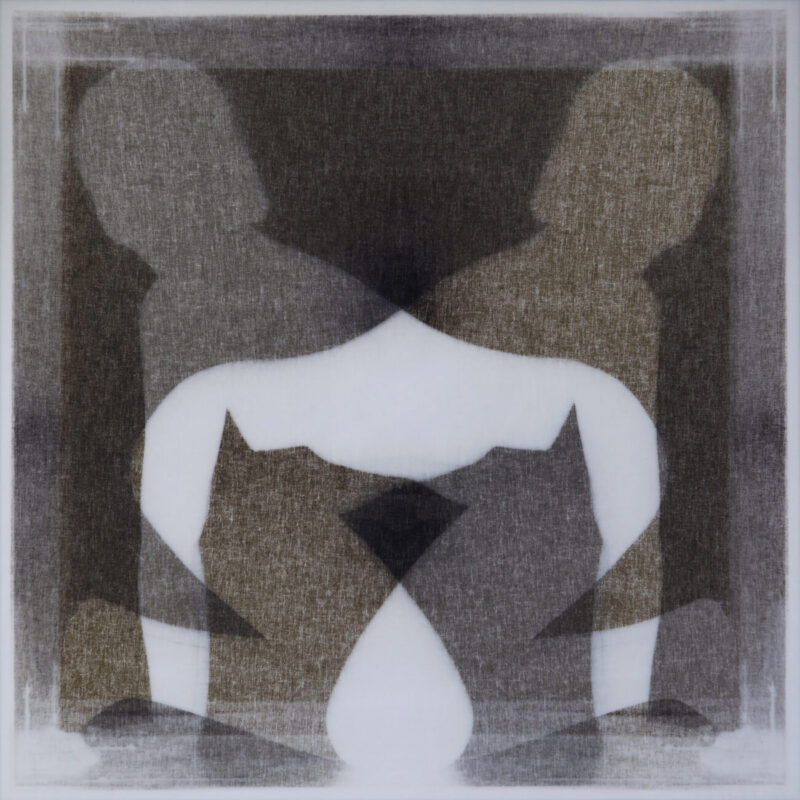
As a reminiscence of the Vitruvian Man of Leonardo Da Vinci, inscribed in the perfect geometries as representation of Heaven and Earth, the bodies of Scrima are enclosed in cubes of regenerated quartz, a material he has chosen to reinterpret in a modern key the classicism of marble. In addition, the square shape framing his figures also refers to today’s visual language dominated by social media, Instagram in primis, which favor square images.
The nude bodies, immortalized inside those cubes, are veiled with gauzes and cloths in order to become silhouettes which, having lost specific somatic features, become universal. You immediately notice how these abstract figures are inspired by statues. Even by opening the catalog that narrates the composition of the image plates, the possibility of manually overlapping the glass-like page with the image of the next page makes the ‘sculptural’ construction of his works more evident. Some of his ‘assemblage’ of shoots, which he began composing in 2012, are also printed on regenerated ceramic tiles, forming a colored mosaic of 400 pieces. A play of lights and shadows, of antithetical layers, negative and positive, which constitute a new synthesis of body language and make us imagine infinite other possible combinations.
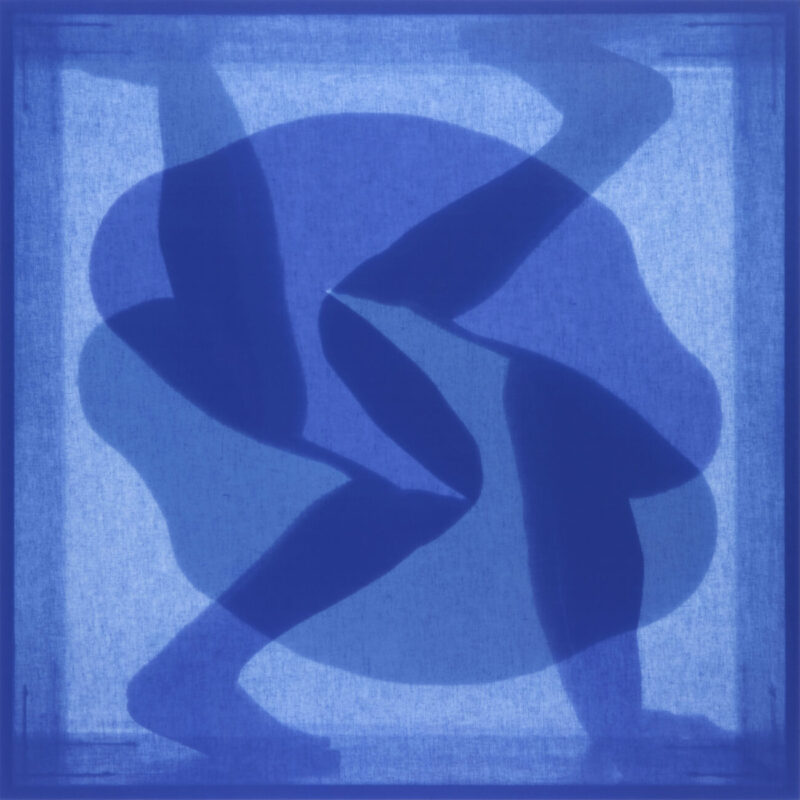
Despite this new artistic exploration, Scrima is aware that his visual paradigms are always same, which only evolve from fashion to art. After all, today the world of fashion goes far beyond the dress’s glorification. It is a social means for the affirmation of identity, inclusiveness, claiming the power of influence and raising consciousness of an art that, at least conceptually, is accessible to all.
“Fashion works like art, as Andy Warhol said, there is no difference between commercial and artistic photos. My aesthetic and introspective vision is the same in both worlds ”.
Thus, ‘Disembody’ desires to preserve the importance of aesthetic pleasure, which for Scrima is exclusively dictated by the rules of classical beauty whether it comes to fashion’s or art’s context, and transforms it into personal and social reflection, aiming at the vision of a common identity, a universal shape, which we can all abandon and recognize ourselves in.
The social-anthropological imprint of his photographs also emerges in a particular series where the intertwining of bodies recalls African tribal masks. The black continent is in fact particularly dear to the artist, who has spent years in close contact with the African culture, fighting against Western media’s misrepresentation of it, and having donated the proceeds of the internationally successful “African Awakes” exhibition to two Kenyan NGOs.

The artistic references, but also the humanistic ones, that are contained in the photographs of Disembody are multiple. From the psychological tests of Rorschach, to the expressionist painting of Matisse and Rothko, to the surrealist photographs of Man Ray… Scrima confesses that this constructed sphere of symbolism is never random but was born from in-depth studies on the aesthetics that have always fascinated him, that of pure lines of the great masters of the past. Strengthening this constant search for purity, is also the choice to exclude any Photoshop intervention. By now we know, the work of a photographer, especially when it comes to fashion, is divided into two macro phases: production and post production. There are contemporary photographers who have even made post production the heart of their artistic research, Nick Knight to name one. The images of ‘Disembody’ instead are the fruit of mere photographic technique.
“Lately, even in fashion there is a tendency to reduce post production, but I started this process years ago, in 2012, when it was widely used. Everything I show here I could have done even before the advent of Photoshop”.
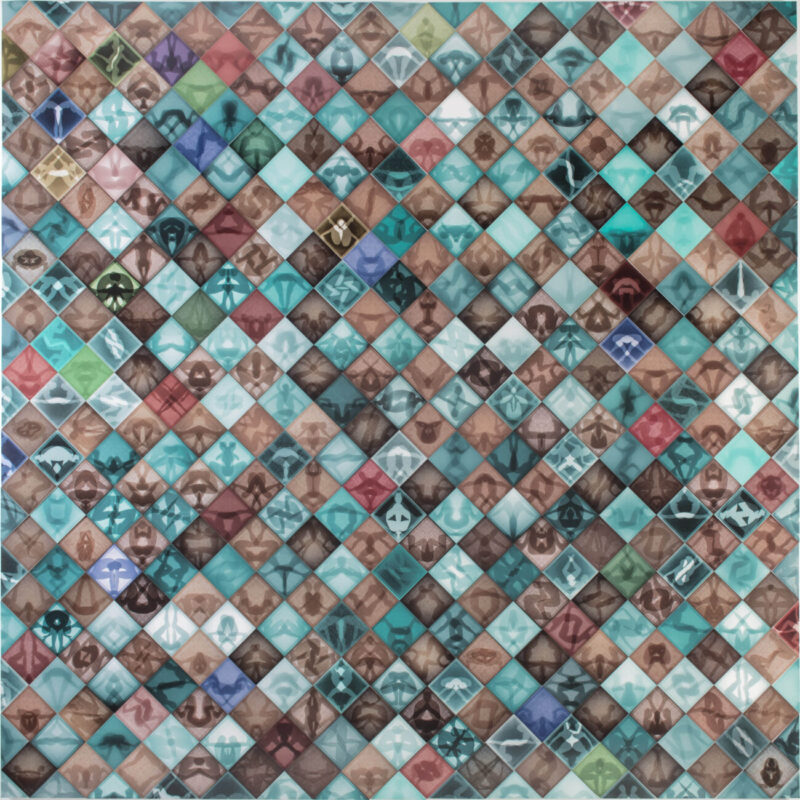
This immaterial ‘construction’ of corporeality supported by the abstraction of extended and multiplied images also suggests the need to reconnect our essence with that of the external world. The figures trapped into the cube evoke precisely the mental-physical closure, the isolation that we have all experienced in recent months. So the desire to go out and reborn, to re-find harmony with the outside world.
“This exhibition is part of a exposition of the Galleria Fabbrica Eos entitled “New Post Human”, linked to the current situation and its social consequences. I spend most of my time traveling and don’t grant myself much time to stay home in reflection. I decided to pass the lockdown in Cremona with my parents in peace and in that period to resume past projects, including Disembody. The lockdown brought nothing so new. The isolation has been around for years and has only been amplified. In the age of social media we are all isolated from each other, we live in a virtual world, from which it seems impossible to get out. It is an era of fiction and commodification of the body and by veiling these bodies I try to restore their essence.”
“Disembody”
Fabbrica Eos, Milan
Until October 22
